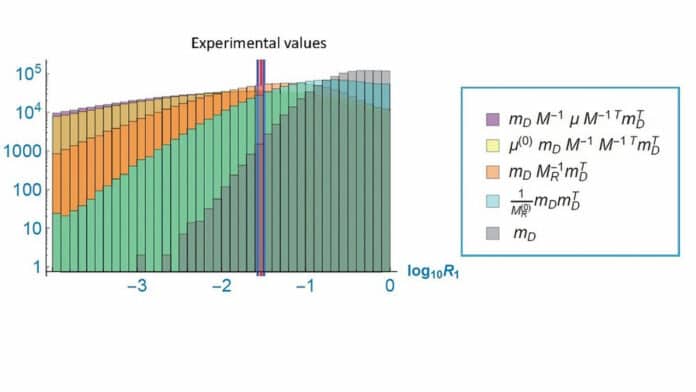The Standard Model (SM) of particle physics can mainly explain the experimental results, but there remain several unsolved issues. In particular, it has been found that neutrinos have very tiny masses, and the flavor mixings are almost maximal in the neutrino oscillation experiments.
Scientists from the Osaka Metropolitan University Graduate School of Science, under the direction of Professor Naoyuki Haba, examined the assortment of leptons that make up the neutrino mass matrix. The study team assumed that neutrinos are approximately equal in mass between generations because neutrinos are known to have less variation in mass between generations than other elementary particles.
By allocating each matrix component at random, they examined the neutrino mass matrix. They demonstrated mathematically that the lepton flavor mixings are substantial using the random mass matrix model.
Professor Naoyuki Haba from the Osaka Metropolitan University Graduate School of Science said, “Clarifying the properties of elementary particles leads to the exploration of the universe and ultimately to the grand theme of where we came from!”
“Beyond the remaining mysteries of the Standard Model, there is a whole new world of physics.”
Researchers discovered that the anarchy approach necessitates that the matrix’s measure adheres to the Gaussian distribution after analyzing the neutrino mass anarchy in the Dirac neutrino, seesaw, and double seesaw models.
The research team was able to demonstrate, as best they could at this point, why the calculation of the squared difference of the neutrino masses is closest to the experimental results in the case of the seesaw model with the random Dirac and Majorana matrices after taking into account several models of light neutrino mass where the matrix is composed of the product of several random matrices.
Professor Haba said, “In this study, we showed that the neutrino mass hierarchy could be mathematically explained using random matrix theory. However, this proof is not mathematically complete and is expected to be rigorously proven as random matrix theory develops.”
“In the future, we will continue with our challenge of elucidating the three-generation copy structure of elementary particles, the essential nature of which is still completely unknown theoretically and experimentally.”
Journal Reference:
- Naoyuki Haba, Yasuhiro Shimizu, Toshifumi Yamada. Neutrino mass square ratio and neutrinoless double-beta decay in random neutrino mass matrices. Progress of Theoretical and Experimental Physics, Volume 2023, Issue 2, February 2023, 023B07, DOI: 10.1093/ptep/ptad010
